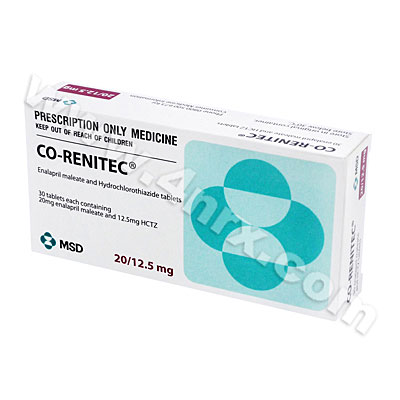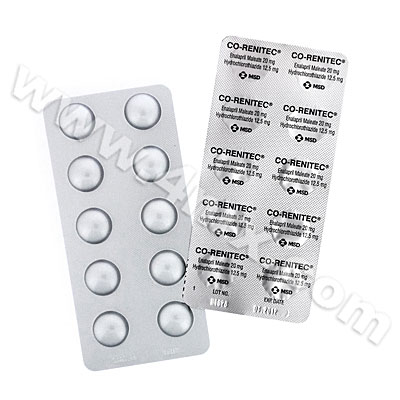 |
Home  Heart Heart  Co-Renitec (Enalapril Maleate/Hydrochlorothiazide) Co-Renitec (Enalapril Maleate/Hydrochlorothiazide) |
|
|||||||||
|
Co-Renitec (Enalapril Maleate/Hydrochlorothiazide)
What is Co-Renitec (Enalapril Maleate/Hydrochlorothiazide) used for? Co-Renitec (Enalapril Maleate/Hydrochlorothiazide) contains two active ingredients. The first ingredient, enalapril is a type of ACE inhibitor, which inhibits the chemicals that cause the tightening of blood vessels thereby helping the blood to flow more smoothly. The second ingredient, hydrochlorothiazide is a type of drug known as a diuretic or a water pill. It helps the body to remove excess and unnecessary water and salt by helping the kidneys to convert it into urine. How should I use Co-Renitec (Enalapril Maleate/Hydrochlorothiazide)? Co-Renitec (Enalapril Maleate/Hydrochlorothiazide) combines the two active ingredients into one tablet, which should be taken with or without food. The exact dosage depends on the condition that requires treatment, and will normally range from 1 to 2 tablets per day. You should continue taking this medication, even if you feel better. Only discontinue taking it if your physician directs you too. What are the side effects of Co-Renitec (Enalapril Maleate/Hydrochlorothiazide)? Some common side effects of Co-Renitec (Enalapril Maleate/Hydrochlorothiazide) include:
Patients who notice toe pain, joint pain, signs of dehydration, eye pain or vision problems should inform their physician immediately. Please Note Strictly follow all instructions provided to you by your physician or pharmacist while using Co-Renitec (Enalapril Maleate/Hydrochlorothiazide). Optimum and safe dosage can differ based on the patient and the condition being treated. As this medication may be unsafe for certain patients, it is essential you always inform your physician if you are pregnant or breastfeeding, as well as if you have any allergies, other illnesses, or ongoing health conditions, and if you are taking any other form of medication, supplements, or herbal products. Immediately seek emergency medical care if you have any allergic or hypersensitive reaction. Common signs of a reaction include hives, swelling, skin rashes, chest pains, as well as trouble breathing or swallowing. 

|
|||||||||||||||||